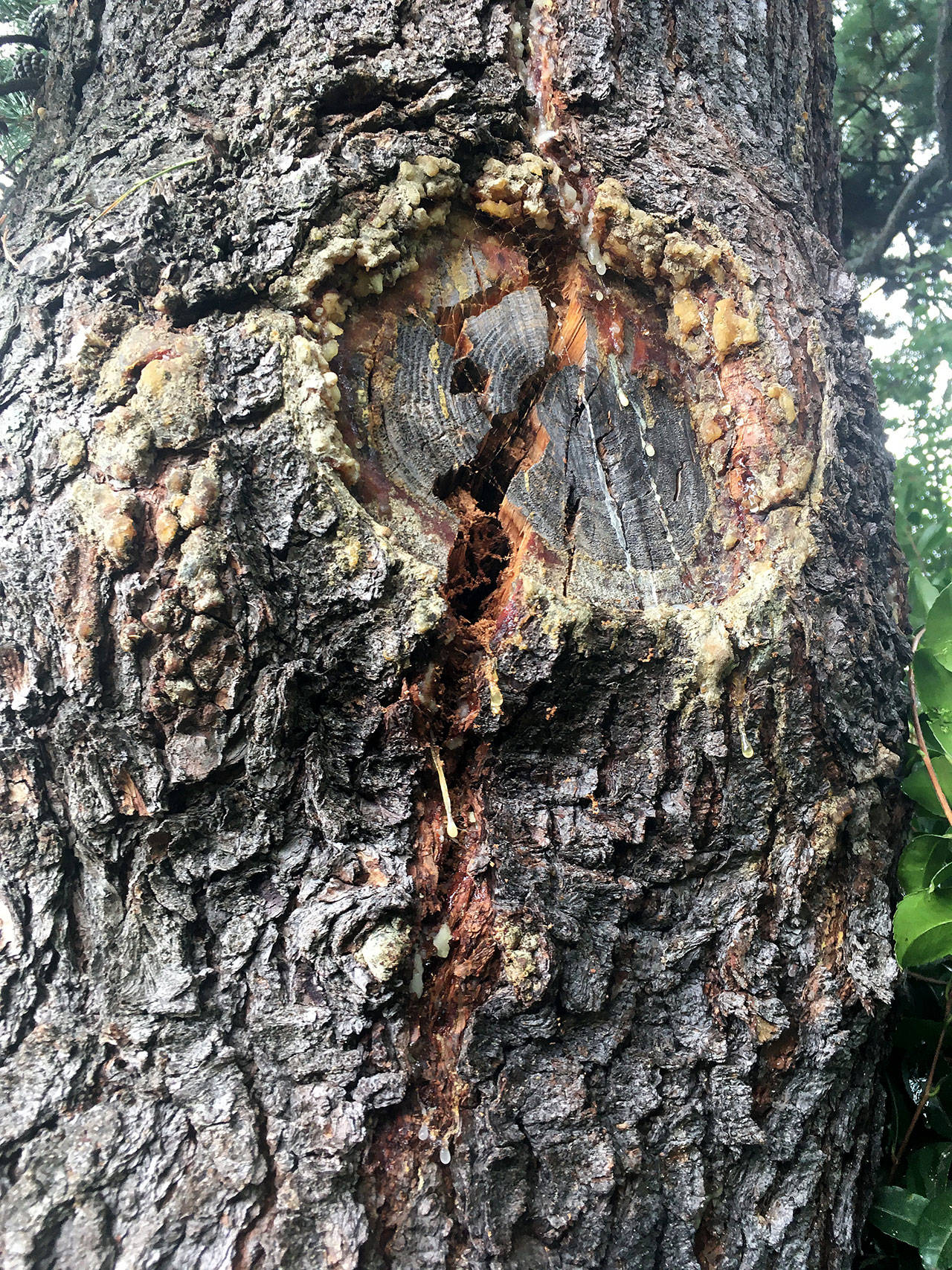Halloween may be over, but there are certain real threats still looming overhead. Heading into the stormier season, there are potential safety risks relating to trees.
Falling trees can be dangerous and damaging to property. Some trees are more likely to fall than others, being unhealthy, damaged, structurally unsound, partially dead, or in overly saturated soil.
Roy Hisler, Duvall resident and assistant district manager for the Davey Tree Expert Company, said the only way to be sure is to have a certified arborist inspect the trees in question, but there are some signs to look for.
“I understand what it means and what’s going on,” he said. “As a regular homeowner, you can’t tell certain things with a tree.”
He said there are many things to look for in a tree before and after a storm. People should consider how close trees are to their home and have the structure and health of the tree inspected if there is any doubt.
Check for decay — a sign of decay may be mushrooms around the base, like trunk cavities. Sometimes, trees can be dead in the top where it’s hard to see. Hisler said he checks for how much dead wood trees have.
Another thing to consider is whether a tree leans to one side or the other or has visible breakage, like chipped or peeling bark, cracks in the trunk or hanging branches.
Other structural concerns include weight distribution. If a tree is heavier or has more branches on one side than the other, and if trees have multiple trunks stemming out of the base, that can cause stress, and both are structural concerns.
The soil of the tree presents its own set of hazards as well. If the soil is too saturated — from flooding or excessive rains, for example — trees may be more likely to uproot in high winds.
“Too much moisture can cause the soil to be easily moved,” he said. “Heavy soil saturation with water and high winds improves the chance of uprooting even more. That’s a combination you don’t want during a windstorm.”
The overall health of the tree can be evaluated based on several factors including the amount of foliage and the color of leaves and needles. But at the same time, many variables can affect that, including the tree’s age and proximity to other trees.
Additionally, he said any trees that are more isolated, not sheltered by surrounding nearby trees, or in higher elevation, are more exposed to direct wind and therefore more susceptible to damage.
Hisler said one sign to look for in the summer is if a tree’s leaves change to fall colors too early, way before the rest of the trees.
“In late summer, early fall colors may be a sign of stress,” he said.
He explained that professionals also have tools and technology for measuring the health and structural stability of trees, so it’s best to have an expert come out if there are safety concerns or trees that might need removing. A certified arborist, for example, can measure to see how much decay is in the interior of the tree in the spot inspected.
When asked how some of the issues can be prevented, Hisler said it’s a good idea to prune dead wood, fertilize, mulch, and make sure the trees are getting a proper amount of water.
“But if there’s a structure issue or decay, there’s not much you can do,” he said.
Sometimes after a big storm, damage could be done to a tree and a homeowner may not notice. So Hisler recommends taking photos of trees, especially ones that are leaning, before a storm and then checking after the storm for any differences.
“Maybe it has some new cracks or has changed its lean. Or there could be cracks in the ground or soil around the tree,” Hisler said. “Sometimes it’s hard to tell. There can be a void in the ground, cracks or gaps in the soil around the base of the tree.”
“Sometimes people are paranoid, too, and think a tree has moved and it hasn’t,” he added with a chuckle. “But it’s still good to check. Better safe than sorry.”
During the storm, there’s not much than can be done, and Hisler advises people to stay indoors.
“Don’t go outside. Don’t go under trees,” he said.
He said often people worried about trees uprooting will be concerned at the sight of the tops of trees swaying in the wind. But he said that’s normal and people should really be looking at the ground and surrounding soil for any signs of movement.
“But again, I don’t suggest anyone go outside during high winds,” he said.
He said he and his team service the entire region and they get many calls, including in the Snoqualmie Valley and Issaquah areas, to inspect or safely remove trees. He said these areas can be more at risk due to high winds, hillsides, higher elevation and flooding.


